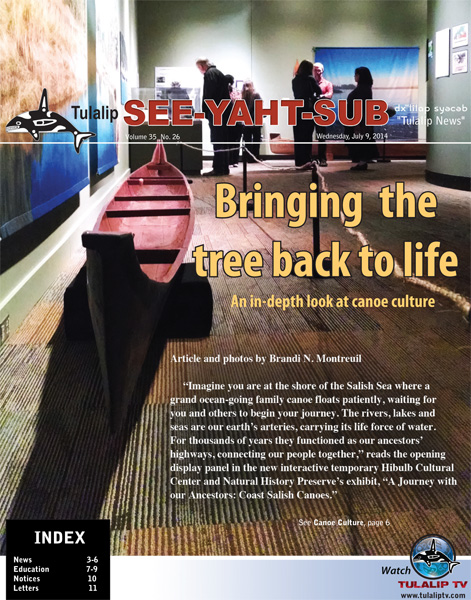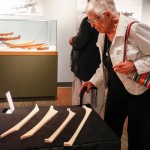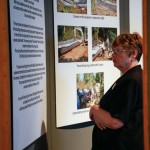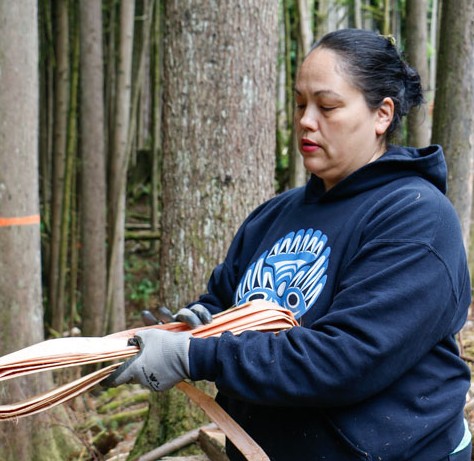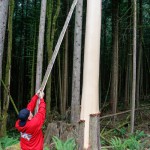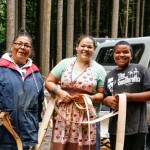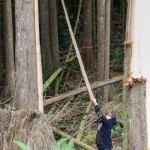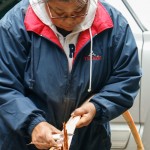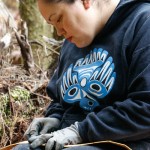Click on the link below to download the July 9, 2014 Tulalip See-Yaht-Sub Issue
Month: July 2014
Supreme Court Used Indian Law to Prevent Birth Control for Women
In wake of the 5 – 4 decision by the Supreme Court in Burwell v. Hobby Lobby issued June 30, political commentary on religious freedom, abortion rights, and the war on women has been endless.
Less talked about in the mainstream has been that the court used an Indian-centric law, the Religious Freedom Restoration Act (RFRA) of 1993, to help it come to its opinion, which said that some family-owned and other closely held businesses, like the Hobby Lobby craft store, are allowed to opt out of the federal Obamacare mandate requiring such companies to pay for contraceptives in health coverage for their workers.
As the conservative justices wrote for the majority, the RFRA was enacted by Congress in 1993 in response to a 1990 high court decision, Dept. of Human Resources of Ore. v. Smith, which found that a state could deny unemployment benefits to a person fired for using peyote, even if the drug was used as part of a religious ritual.
The Smith case came to fore after two members of the Native American Church were fired for ingesting peyote for sacramental purposes and then were later denied unemployment benefits by the state of Oregon because consuming peyote was against the law there.
Enter Congress and its RFRA, aimed at preventing such religious-based discrimination. It passed with almost unanimous support in both the House and Senate, and President Bill Clinton signed it into law in 1993.
One year later, the House Subcommittee on Native American Affairs and the Senate Committee on Indian Affairs further dealt with the narrow issue of Smith on the specific issue of the sacramental use of peyote.
“We amended the American Indian Religious Freedom Act [AIRFA] in 1994 to allow for the sacramental use of peyote,” says Tadd Johnson, former director of the subcommittee and now the head of the American Indian studies department at the University of Minnesota at Duluth. “President Clinton signed it into law. This AIRFA amendment on peyote still stands.”
Using Peyote to Prevent Birth Control
Fast forward 20 years: The owners of Hobby Lobby and two other closely held for-profit corporations who believe life begins at conception and that it would violate their Christian beliefs to pay for birth control, sued the federal government under the auspices of RFRA.
Writing for the majority, Justice Samuel Alito agreed with their argument: “As applied to closely held corporations, the [Department of Health and Human Services] regulations imposing the contraceptive mandate [of Obamacare] violate RFRA,” he wrote. “RFRA applies to regulations that govern the activities of closely held for-profit corporations like Conestoga, Hobby Lobby, and Mardel.”
The high court further offered that the federal government could find ways to pay for birth control coverage if it wishes to do so.
And that is how a law rooted in protecting Indian religious freedom was successfully used by major companies to shield them from having to pay for birth control for employees covered under the companies’ health plans.
Say What?
It was a shocking development to many Indian-focused legal experts who were working in the trenches during the peyote-based foundations of RFRA, and who have since seen that very law applied by the federal courts in ways that they feel are unjust toward American Indian religious practices involving sacred sites.
Stephen Pevar, a lawyer with the American Civil Liberties Union (ACLU) who has long argued in favor of protections for Indian religious practices, said he never envisioned that the RFRA would be used for such a purpose. “[I]t never occurred to me,” he said. “I doubt if it occurred to anyone.”
Pevar followed the drafting of the RFRA and early Indian advocacy for it by respected Native American legal scholars including Jack Trope, director of the Association on American Indian Affairs, and Walter Echo-Hawk.
Trope, too, was surprised to see the RFRA used in such a manner. “I can’t say that I ever really thought about the issue of for profit corporations utilizing RFRA until these cases came up,” he says.
Using RFRA Against Indians & Women
In 1997, Indian-focused legal advocates were disturbed to see the RFRA watered down by the Supreme Court, which ruled then in City of Boerne v. Flores that the law was applicable to the federal government but not to the states. Thus, tribal citizens who have their religious freedoms usurped by states, as happened in the original Smith Peyote case, are left unprotected by federal law.
Of more concern to such advocates is that the high court has never used the RFRA to do what it was intended to do: protect Indian religious freedoms. Yet now, it is using the law to limit the rights of women who want to use their healthcare coverage to buy birth control.
Pevar sees a parallel between how the high court treats Indians and women. “The Supreme Court, with rare exceptions, has been insensitive to women’s issues, and the Court’s record is even worse—far worse—on Indian issues,” he says. “In the last 30 years, Indians and tribes have lost at least 75 percent of their cases in the Supreme Court. The Supreme Court is asked to review some 7,000 cases a year but selects fewer than 100.
“The fact that the Court selects so many Indian cases and then rules against Indians in those cases suggests a desire to harm Indian interests.”
A Silver Lining for Sacred Sites?
If there is any good news for Indians to come from the case, Trope says that it provides an outline to allow Native-focused lawyers to strengthen their arguments in the federal courts regarding the use of RFRA to protect sacred sites in future cases.
Trope notes that in the recent Navajo Nation case before the Ninth Circuit focused on the tribe’s contention that the San Francisco Peaks are sacred to the tribe and thus corporate development on them should be limited, “one of the main arguments made against us was that RFRA was meant to turn back the clock to the day before the Smith decision in 1990.”
Such rationale meant that decisions like the Supreme Court’s in the 1988 Lyng case – which interpreted the First Amendment in a way that did not provide protection to Indian sacred sites – would still be good law, despite the existence of RFRA. (The Lyng case centered on an American Indian religious-based challenge to the development of a road for timber harvesting.)
But “[t]he court in the Hobby Lobby case rejected the idea that the intent of RFRA was only to restore the law as it was in 1990 before Smith,” Trope says. “Instead, the court essentially held that RFRA provides broader protection than was provided by the First Amendment prior to the Smith case.”
Because the application of RFRA to Native sacred sites has been unresolved to date – notwithstanding the Ninth Circuit’s toiling in Navajo Nation’s San Francisco Peaks case – Trope finds in the latest decision a reason to be hopeful.
“[O]nly time will tell whether the interpretation of RFRA in Hobby Lobby turns out to be helpful in future sacred sites cases or whether courts will continue to find ways to reject Indian religious freedom claims,” says Trope.
Read more at http://indiancountrytodaymedianetwork.com/2014/07/02/supreme-court-used-indian-law-prevent-birth-control-women-155618?page=0%2C1
Can Canada’s indigenous communities stop Prime Minister Stephen Harper from turning the country into a petrostate?
foreignpolicy.com
VANCOUVER, Canada — On Canada’s western coast, where rain-forested mountains dip into gray-blue seas, the political anger is ready to explode. The indigenous people, whose ancestors have fished, hunted, and thrived here since the last ice age, are furious about an energy policy dreamed up in Ottawa that they fear could permanently damage their land and destroy their way of life.”Opponents can mock our love of our home as sentimental, but it won’t change what we feel,” the award-winning indigenous novelist Eden Robinson wrote recently in the Globe and Mail. “[T]he mood in our base is simmering fury.”
Robinson lives in Kitamaat Village, a small community some 400 miles north of Vancouver, near where the Kitimat River meets salt water. Its 700 indigenous inhabitants belong to the Haisla nation, one of 630 such recognized “First Nations” across Canada, which has called this coastal region home for thousands of years, going back to long before European settlers first arrived in the 18th century.
Lately the Haisla have had to reckon with a new unwelcome visitor: Calgary-based Enbridge, one of the world’s largest fossil fuel transporters. If the Northern Gateway project the company has been proposing for the past decade goes forward, a pipeline pumping 525,000 barrels per day of heavy crude from Alberta’s oil sands would end within walking distance of Robinson’s home. Tensions in her community are so high, she wrote, that “people will spit at you if they think you support Enbridge.”
It’s likely they will also spit at someone they think supports Canadian Prime Minister Stephen Harper. In June, his Conservative government approved the $7.3 billion Gateway project, which would ship oil across the Rocky Mountains to the Port of Kitimat, load it onto supertankers, and sell it for a premium to Asian markets. To reach the Pacific, supertankers must first navigate the winding Douglas Channel. In 2006, a provincial ferry crashed and sank in the channel, and people living in the nearby Gitga’at Nation village of Hartley Bay fear that history will repeat itself — but on a scale of environmental and cultural damage hard to fathom. They recently stretched a 2.8-mile crocheted rope in protest of Gateway across the Douglas Channel.
“Each stitch is shaped like a teardrop,” said blockade organizer Lynne Hill, “because this is a very emotional thing for us.”
“Each stitch is shaped like a teardrop,” said blockade organizer Lynne Hill, “because this is a very emotional thing for us.”
For Harper, Gateway promises a $300 billion GDP boost and the prestige of achieving his most important foreign-policy goal, to remake Canada into a global “energy superpower.” But to many First Nations living along the pipeline’s 731-mile-long route, Gateway symbolizes “everything that people don’t want,” Robinson said.
They intend to fight the pipeline in court by arguing for legal authority over land they’ve lived on for millennia and never surrendered to the federal government. A landmark decision from Canada’s Supreme Court on June 26 may have brought groups like the Haisla one step closer to achieving that authority.
Tension between indigenous people and the pipeline project are nothing new. In 2006, Enbridge sent surveyors, chain saws in hand, into the ancient forest near Kitamaat Village to scout sites for an oil terminal. They felled 14 trees that bore living evidence of First Nations history: deep notches made by the Haisla hundreds, or perhaps even thousands, of years earlier. “We compared it to a thief breaking into your house and destroying one of your prized possessions,” Haisla Councilor Russell Ross Jr. told me in 2012.
The relationship between the Haisla First Nation and Enbridge only got worse. Five years after the tree-cutting incident, the company offered a $100,000 settlement, which was “almost an insult” in the opinion of Chief Councilor Ellis Ross, as he stated in a letter to Enbridge’s president. Even worse was Enbridge’s additional offer to make amends with a “cleansing feast.” If such a ceremony was practiced widely in Haisla culture, Ross wasn’t aware of it.
“I have never witnessed Haisla Nation Council initiate a cleansing feast and I doubt I ever will,” he wrote to the firm. “I would appreciate it if your company’s shallow understanding of our culture is kept out of our discussions.”
All along the Gateway route, Enbridge was making similar cultural flubs. These gaffes, along with a negotiating style Robinson described as heavy on “talking points” and light on listening, had by 2011 caused 130 First Nations across British Columbia and Alberta to oppose the project, many of them not even directly impacted by it. “If Enbridge has poked the hornet’s nest of aboriginal unrest,” Robinson wrote, “then the federal Conservatives, Stephen Harper’s government, has spent the last few years whacking it like a pinata.”
The whacks began coming after Harper’s Conservatives won their first-ever majority rule in 2011. Since then, his Conservative Party has made it easier to get oil and gas projects approved, has cut environmental protections, and has proposed contentious changes to indigenous education. “It’s felt like the Conservatives have just been hammering us with legislation,” Robinson said. Tension with the Conservatives are so widely felt among First Nations that in late 2012 there emerged a protest movement called Idle No More, whose sit-ins, rallies, and hunger strikes brought national attention to the cause of indigenous sovereignty.
This May, a United Nations envoy deemed native distrust of Harper a “continuing crisis.” On Gateway, Harper has done little to ease the problem. After the U.S. rejection in early 2012 of TransCanada’s Keystone XL, a pipeline that was supposed to link Alberta’s oil sands to Texas, the prime minister “expressed his profound disappointment” to U.S. President Barack Obama, Harper’s office said in a statement. A week later, at the World Economic Forum, Harper vowed to export oil to Asia instead. Projects like Gateway were now a “national priority,” he declared.
For Harper, the economics of the project provide good reason for its priority status. Enbridge estimates that, once completed, Gateway would boost Canada’s GDP by $300 billion over the next three decades. Ottawa alone stands to gain $36 billion in taxes and royalties. And there is the issue of Canada’s role in the world. One month after the World Economic Forum, in February 2012, Harper traveled to China, where an influential crowd of Chinese business executives that Canada is “an emerging energy superpower” eager to “sell our energy to people who want to buy our energy.”
While Harper delivered that pitch in Europe and Asia, his then-natural resources minister, Joe Oliver (now finance minister), was declaring war on Gateway opponents back at home. In an open letter, Oliver lashed out at the “environmental and other radical groups” that in their protests against the pipeline project “threaten to hijack our regulatory system to achieve their radical ideological agenda.”
It was a tactical stumble, wrote George Hoberg, a University of British Columbia professor who studies the Gateway standoff, that pushed “many moderates who were offended by the style of the attacks into strong opponents of the pipeline.” Oliver’s letter was mentioned again and again during two years of federal hearings on Gateway, for which 4,000 Canadians registered to speak.
By the time those hearings finished last December, Gateway had become one of the top political issues in Canada. Much credit for that is due to a sustained media campaign coordinated by British Columbia’s major green groups, which deliberately evoked memories of Exxon’s 1989 Valdez disaster. On the spill’s 20th anniversary in 2009, they declared a “No Tankers Day.”
“There will be a sacrifice we’re asked to make at some point, and the [ecological] damage will be permanent,” said Kai Nagata from the Dogwood Initiative, one of the leading groups in that campaign. “Nobody’s come up with a compelling argument about why we should accept those risks.”
The continual focus on Gateway’s risks — to one of North America’s vastest wildernesses and to the indigenous people living within it — allowed green groups to broker alliances with First Nations all along the pipeline route. They appeared together at joint press conferences and waged a two-front opposition to Gateway so effective that, by this June, nearly 70 percent of people in British Columbia opposed immediate federal approval of the project, according to a Bloomberg-Nanos poll.
“The reason why Gateway has become such a political albatross for Stephen Harper,” Nagata explained, “is he’s managed to find a way to align the majority of British Columbians with the majority of First Nations.” Not to mention Vancouver’s mayor, British Columbia’s premier, and Harper’s political opponents in Ottawa, all of whom have spoken out against the project.
None of that opposition has deterred the federal Conservatives, though. In mid-June Harper’s government officially approved Gateway, deeming it “in the public interest.” Within hours of the announcement, a coalition of almost 30 First Nations and tribal councils in British Columbia were vowing to “immediately go to court to vigorously pursue all lawful means to stop the Enbridge project,” and promising that “we will defend our territories whatever the costs may be.”
Unlike in the United States, where indigenous peoples were conquered and then settled on reservations, few along Gateway’s proposed route have ever surrendered territory. What power they actually wield over that territory is legally disputed. Yet a Supreme Court decision on June 26 granting land title to the Tsilhqot’in First Nation gives greater legal standing to native groups with unresolved land claims.
The consequences of that decision, as well as the autonomy it ultimately provides to indigenous people, will be decided if groups like the Carrier Sekani Tribal Council, which represents eight First Nations across central British Columbia, challenge Gateway in court as unconstitutional. “What we’ll really be doing is testing our authority and our jurisdiction over the land,” said Terry Teegee, the council’s tribal chief. “It’s really hard to imagine this project going ahead.”
Enbridge is still confident. “We are prepared” for legal challenges, the company’s CEO, Al Monaco, said during a recent conference call, in which he contested the notion that people like Teegee speak on behalf of all First Nations. Monaco argued that 60 percent of indigenous people living along Gateway’s route in fact want to see it built (a claim called “ridiculous” by the Coastal First Nations group). Those court battles that First Nations do bring, in Monaco’s opinion, are likely to be resolved in Enbridge’s favor over the next 12 to 15 months. Gateway’s construction could begin shortly after. “This is not necessarily an endless process,” he said.
For indigenous people like Robinson, as well as the Unist’ot’en husband and wife now living in a wood cabin built intentionally along the pipeline’s path, the fight against Enbridge stands in for a larger cultural struggle. So long as companies and governments continue to view the rights of First Nations “as an impediment to getting what they want,” Robinson said, the struggle will surely continue.
Jennifer Castro/Flickr Creative Commons
Vice Chairman Parks delivers annual State of the Tribes address
By Andrew Gobin, Tulalip News
“In 1996, Marysville and Tulalip had just built a bridge, the 88th Street Bridge,” began Tulalip Vice Chairman Les Parks as he delivered the annual Marysville Tulalip Chamber of Commerce State of Tulalip Address. He recalled the direction Tulalip was moving in when he first served on the tribal council, and how it has changed over the last 20 years, noting the focus and success of building an economy that is mutually beneficial for both Tulalip and Marysville.
“On the east side of this bridge was a brand new corridor–and it was a big day for the Marysville Tulalip area.” Today, it is a shopping plaza that includes Haggens, Starbucks and other retail stores. “But on the west side of the freeway there was nothing but a stand of cedar trees,” he recalled. “We went to work building Quil Ceda Village. One of the greatest feelings is to do what we did here at Tulalip, for our Indian people, and the dream and the vision that we had of economic success has become a reality.”
Since the construction of the 88th Street Bridge in 1996, the Quil Ceda Village business park experienced a rapid growth in economic development, creating a successful economy which continues to grow today. In that time, Quil Ceda Village also received a charter as a federal municipality, now operating as a city, governed by the Tulalip Tribes, and yet, separate from the tribal government. Because of that structure, Quil Ceda Village has been able to contribute immensely to the greater economic development and growth of Snohomish County. Since the establishment of first federal city, Washington D.C., Quil Ceda Village is the second federally chartered city in the nation. A dream realized after more than 50 years, the village is a thriving success which has the Tulalip Tribes poised to reclaim taxes.
“The Federal Register now contains language that prohibits states and counties from assessing taxes on building improvements on and off reservation when it’s Indian owned-land and affirmed by the Great Wolf Lodge case this September in the Ninth Circuit,” continued Vice Chairman Parks. “We are currently in the process of developing an Assessor’s office so that we can begin to assess those taxes we’ve always known were ours. Tulalip itself, and I know it has been told to the Marysville Tulalip Chamber of Commerce many times, put a ton of money into the infrastructure, in the ground we’re sitting on, to the tune of about $65 million. Now I believe we are in excess of $100 million.”
“And who gets to benefit from the tax?” he asked. “Marysville does, Snohomish County does, the state does, but Tulalip gets zero,” Vice Chairman Parks explained.
There are a number of Tulalip public works projects that are underway, planned, or in the planning process that will ease some of the stressors and impacts which accompany economic expansion. Most notably are the utilities project known as the Big Water project, and revisions to the 116th Street Freeway Overpass to streamline traffic flow. Currently, the overpass is a bottleneck, with one lane in each direction, and a center turn lane for each freeway onramp.
Parks announced, “Next month we’re going to put out to bid to start construction of the bridge. In eighteen months, we’re going to see a six-lane bridge, which is what everybody’s been waiting for,” he said. “Largely, Tulalip is the lead on that project; we invest a lot of money, a lot of time, a lot of effort. We know we have been responsible for the traffic nightmare, we know Marysville has been partially responsible, but we have taken the lead. We do that because we want to be good neighbors. We want our success to be your success, and your success to be ours. Thank you Marysville, thank you everybody that’s contributed to that project,” said Vice Chairman Parks.
“In about two years we’re going to have water pumping through that new water main. 36 million gallons a day, that’s a lot of water. We may not need all that water yet but future generations will. When we decided to invest in that line through a negotiated settlement with Mayor Ray Stephanson, and the City Council of Everett, we wanted water to enhance and augment our stream flows, where our salmon are being raised, and we wanted to do that due to the loss of habitat. We want water back at Tulalip, and we’re going to use water for our people, and we’re going to us water for our salmon. For me, particularly exciting is we’re going to be able to ground inject some of that water into our streams that have low flow during the summer months, and we are going to start seeing more salmon. More salmon for our people, because that’s who we are, salmon people. That water main is two years away and stream augmentation is right behind it.”
Vice Chairman Parks emphasized the importance of Tulalip youth and the fact that they are the next generation of Tulalip leaders. Much has been set aside for them but what has been done to prepare them to manage their success? Chairman Herman Williams, who spoke at the State of the Tribes Address following Vice Chairman Parks, said he and Tulalip Board of Directors have made it clear that education is an important focus of their administration.
On March 29 of this year, the Marysville School District held a summit on education and what role it should play in the success of students. There, Troy McClelland, president and CEO of the Economic Alliance of Snohomish County said, “Snohomish County is first in the state in manufacturing. We are second in the technology field. There are many successful economies in the state, but what makes us different is, in Snohomish County, we build things. There is a place for every student to succeed, if we continue to provide the competitive economy.” Chairman Williams noted that he has spoken with Marysville Superintendent Dr. Becky Berg about this very issue, saying that what students need most for our local economy are tools. They get an education, yet lack the tools and skills to succeed.
Parks said, “For the first time in the United States, a Indian TERO program is able to certify apprenticeships in the state in which we live. Chairman Williams has had a dream that we will have a full-fledged vocational training center on the reservation. And he’s talked about this for years, he’s talked about educating our youth, and he has walked his talk over the years. He knows how important it is to educate our youth, but he also knows that when they leave high school not all of them want to go to college. Some of them want to enter into the trades, some of them want to get trained in computers; and so he’s wanted this vocational training center. The TERO commission really has taken the first step in getting that done with the apprenticeship program. I know that in the very near future, Chairman Williams is going to continue to push, and we will soon have a full-fledged vocational training center on the reservation.”
Vice Chairman Parks ended the State of the Tribes address by thanking the Tulalip and Marysville communities for their coordinated efforts to support the victims and their families of the Oso Landslide, calling it one of the most tragic events in Washington’s history. “The Oso tragedy brought back to memory a piece of Tulalip history in 1830,” he said. “We lost many of our ancestors in a slide right off the tip of Camano Island. That slide buried many, and the subsequent Tsunami drowned many more that were subsisting in villages on the beaches of Hat Island. Our Oso brothers and sisters were welcomed by our Tulalip brothers and sisters at Heaven’s gates. Today I ask that we honor and remember those lost in both tragedies,” he said.
Groups want to see Montana judge’s racist emails
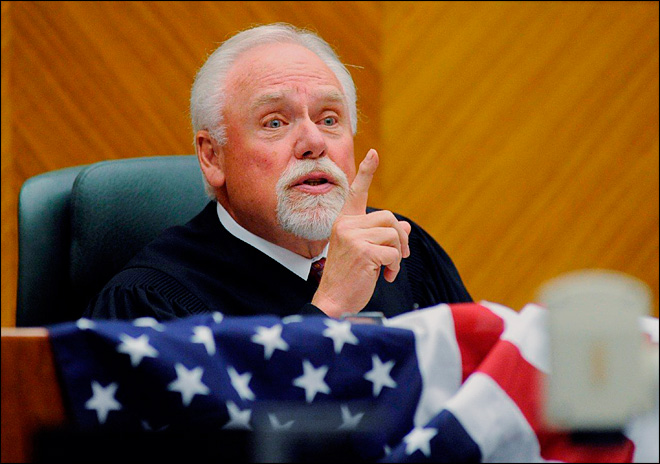
By MATTHEW BROWN, Associated Press
BILLINGS, Mont. (AP) — A group of American Indians wants a court to preserve and eventually release an investigative file containing inappropriate emails sent by a federal judge, including a racist message involving President Barack Obama.
Two Indian advocacy groups from Montana and South Dakota and a member of the Crow tribe filed a petition in U.S. District Court in California asking for the file to be preserved as evidence.
The groups want to know if Chief District Judge Richard Cebull made biased decisions from the bench. Their next step will be to file a lawsuit seeking public release of the documents, plaintiffs’ attorney Lawrence Organ said Wednesday.
Cebull was investigated after forwarding a racist message involving Obama. A judicial review panel found he sent hundreds of emails from his federal account that showed disdain for blacks, Indians, Hispanics, women, certain religions and others. He was publicly reprimanded and retired last year.
The investigation found no evidence of bias in his rulings. Organ said the only way to know that for sure is through the release of the emails.
“The fundamental principles of our entire legal system fall apart if a judge doesn’t come in with a neutral position,” Organ said. “If there are other decision makers involved, we’re not asking for their private email accounts. All we want to see are the emails accounts they used as government officials.”
The 9th U.S. Circuit Court of Appeals has said its file on Cebull is confidential.
Plaintiffs in the case are South Dakota-based advocacy group Four Directions, Montana-based Indian People’s Action, and Sara Plains Feather, a member of southeastern Montana’s Crow Tribe.
Four Directions was involved in a voting rights lawsuit that sought to force several Montana counties to establish satellite voting districts on reservations. Cebull ruled against the Indian plaintiffs in that case, which was later settled after the 9th Circuit overturned his ruling.
Cebull himself and 10 others requested the misconduct investigation after The Great Falls Tribune reported the judge forwarded an email in February 2012 that included a joke about bestiality and Obama’s mother. Cebull apologized to Obama after the contents of that email were published.
The investigation looked at four years of Cebull’s personal correspondence sent from his official email account.
Cebull told the 9th Circuit panel that his “public shaming has been a life-altering experience.” Nominated by former President George W. Bush, he received his commission in 2001 and served as chief judge of the District of Montana from 2008 until 2013.
Named as defendants in the case were the office of 9th Circuit Executive Cathy Catterson and the Committee on Judicial Conduct of the Judicial Conference of the United States.
Ninth Circuit spokesman David Madden said he could not comment on the pending petition.
The plaintiffs attempted in May to directly petition the 9th Circuit. That was rejected by the court’s clerk, who said the petition needed to be filed first at the district court level.
Task force fights back against drugs, gangs on tribal reservations
By Raeanna Marnati, KBJR 6
Red Cliff, Wisconsin ( NNCNOW.com)— It’s a rising problem on the Red Cliff Reservation. “We see a lot of marijuana, prescription medications are huge problem in our community, we’re starting to see heroin and methamphetamine come in, cocaine’s always been here,” said Red Cliff Police Chief Bill Mertig.
But tribal authorities are tackling the problem head first, thanks to the formation of the Native American Drug and Gang Initiative formed in 2007.
“We are able to focus on and share information on future gang trends, drug problems and then also to we can take these experts in the field and be able to work these investigations, knowing the community, knowing the players and be able to almost surgically identify and remove these threats,” said Bryan Kastelic, Native American Drug and Gang Initiative Task Force Commander.
The task force is made up of ten tribal police departments throughout Wisconsin.
It’s a collaboration between tribal, local, state and federal authorities to help with drug and gang identification on the reservation.
“It has the ability to shut the drug trade down be it for a few days or a few weeks but it still has the ability and it sends a signal that we will be back and that we are out there,” said Kastelic.
NADGI recently played a role in the arrest and apprehension of five people taking part in illegal drug activity on the Red Cliff Reservation.
Cash, guns, marijuana, and prescription pills were seized in the bust. But for the police, they have just scratched the surface
“We are not stopping at what we did, this is the start. We have a long way to get to the finish line,” said Mertig.
Officials with NADGI say a lack of support, manpower and funding among tribal police departments led to the formation.
Bringing the tree back to life
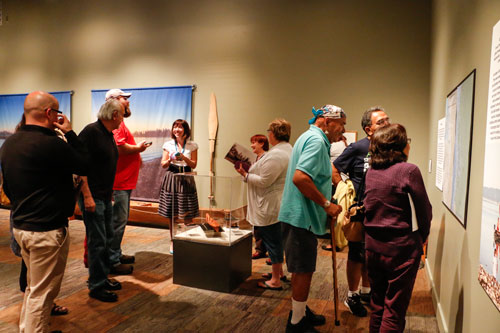
New Hibulb exhibit gives an in-depth look at Tulalip’s canoe culture
By Brandi N. Montreuil, Tulalip News
TULALIP- “Imagine you are at the shore of the Salish Sea where a grand ocean-going family canoe floats patiently, waiting for you and others to begin your journey. The rivers, lakes and seas are our earth’s arteries, carrying its life force of water. For thousands of years they functioned as our ancestors’ highways, connecting our people together,” reads the opening display panel in the new interactive temporary Hibulb Cultural Center and Natural History Preserve’s exhibit, “A Journey with our Ancestors: Coast Salish Canoes.”
The new exhibit, on display through June 2015, explores canoe culture in Tulalip and in Coast Salish tribes. A soft opening for the exhibit was held on Friday, June 27, with over 80 guests in attendance. This interactive exhibit features over 70 items that guests can explore canoe culture through, such as videos on carving canoes, maps, display panels, paddles and tools used to carve canoes with, and a large canoe that guests can sit in.
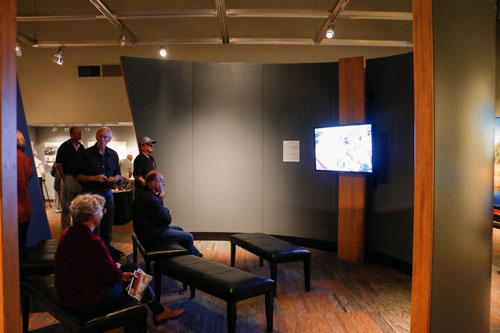
“We hope guests learn the importance of canoes and how they were tied to all aspects of our life,” explains Mary Jane Topash the center’s tour specialist, about what guests can expect from the new exhibit. “We hope to educate people on the types of canoes, anatomy, tools, what it takes to build one, and how they are still used to this day. This exhibit will encompass all aspects of the teachings, history, lifestyle, and how their importance hasn’t changed a whole lot over the years.”
Coast Salish Canoes highlights the roots of the Canoe Journey and the important role that canoes played in its revitalization during the 1989 Paddle to Seattle.
“It was a big learning process for us. It didn’t just happen in 1989,” explained Tulalip carver Joe Gobin, about the preparation involved in the Paddle to Seattle. “Frank Brown and Ray Fryberg Sr. got our [Tulalip] Board involved and the Board saw how this was something missing in our culture. They sent us to different reservations to learn, to Lummi and Makah, because none of us knew how to carve a canoe. We all talked about it and the tools we needed, and how when we were making the canoe we were bringing the tree back to life. And it did come back to life on the reservations, and it brought back so many things in our culture that were forgotten. I am glad to see this exhibit here.”
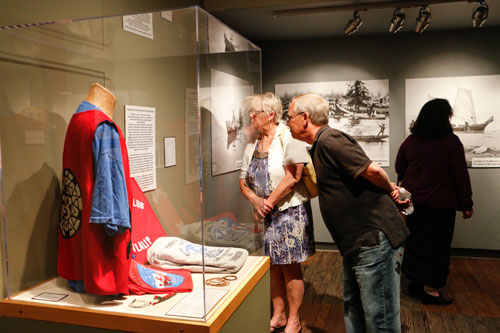
Lena Jones, the center’s curator of education, says guests will leave knowing the importance of canoes in Coast Salish culture. “Our ancestors helped keep a rich environment with superb art. We hope the exhibit will help people appreciate the social gatherings of the Coast Salish people and help our young people recognize their community’s role in revitalizing important Coast Salish traditions that can, and do, help the region.”
For more information on “Coast Salish Canoes,” please visit the Hibulb Cultural Center and Natural History Preserve’s website at www.hibulbculturalcenter.org.
Brandi N. Montreuil: 360-913-5402: bmontreuil@tulalipnews.com
Macklemore joins group demanding Duwamish river clean-up
SEATTLE – A newly formed group of community leaders who say they represent residents, Tribes, workers, fishing families and others, is demanding a better cleanup plan for the Duwamish River.
The group kicked off its “River for All” campaign with a new billboard on Highway 99 South where it crosses the Duwamish. It features their celebrity member, Seattle hip hop artist Macklemore.
Macklemore released a statement on his website, saying “We are Seattle. No bridge, boundaries or invisible man-made lines divide us. This is our home, our people and our community. This is our city’s only river.”
Group member BJ Cummings said the current plan proposed by the EPA properly addresses removal or capping of hot pockets of contamination in the river but calls for a natural recovery method for less contaminated sites. That depends on the river use its natural downriver migration of clean silt to cover the toxic areas over time.
Cummings said that is not good enough to protect the health of the residents along the Lower Duwamish who already face higher pollution exposure rates than most parts of the city.
The EPA is working on a response but has not issued it yet.
Resources
The heart of a cedar
CedarPulling6-27-14A from Brandi Montreuil on Vimeo.
Sisters continue tradition of cedar harvesting
By Brandi N. Montreuil, Tulalip News
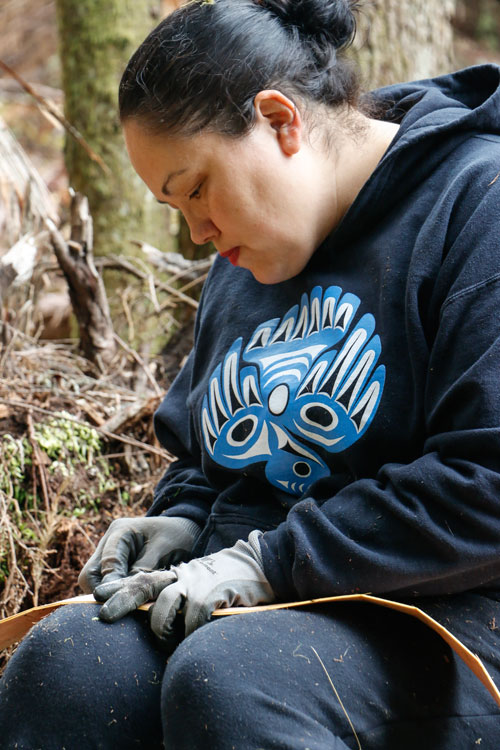
Photo/ Brandi N. Montreuil, Tulalip News
Leaning over a long strip of red cedar placed on her lap, Tulalip tribal member Cerissa “Pipud” Gobin, asked her 4-year-old daughter, Emmy “Pipud” Ramsey, if she knew what was in the center of the cedar tree.
“What is in the center of you? That is right; it is your heart. So in the center of the cedar tree is a heart,” said Gobin, as she continued her methodical rhythm of peeling inner bark from the outer bark on a strip of cedar that was recently cut from a nearby group of trees.
“When I first started pulling I had no idea what I was doing,” said Gobin. “I learned as I went along. I learned to get the little pieces of bark left on the inside off before you leave, otherwise you are going to spend a lot of time trying to get it off later,” she continued, occasionally looking up from the long strip on her lap to watch her son, Coen, pull another strip of bark off a tall red cedar.
Clustered around Gobin and her sister, Chelsea Craig, also a Tulalip tribal member, were long strips of cedar waiting to have their inner bark stripped, which will be used to make cultural items. Outer bark is left for the forest to reclaim. Both women are educators who plan to use the cedar for in-class projects next year.
Gobin, a high school art educator at Heritage High School, uses the cedar to teach students how to make traditional headbands or bracelets, some of which are later used during graduation ceremonies. Craig, a teacher at Quil Ceda & Tulalip Elementary, uses the cedar to teach youth to make baskets, hats, and pins for potlatch giveaways. Although they teach students how to weave different items, together they weave a cultural foundation for Tulalip youth.
These women are part of a large group of Tulalip tribal members participating in a cedar harvest organized by Tulalip Forestry
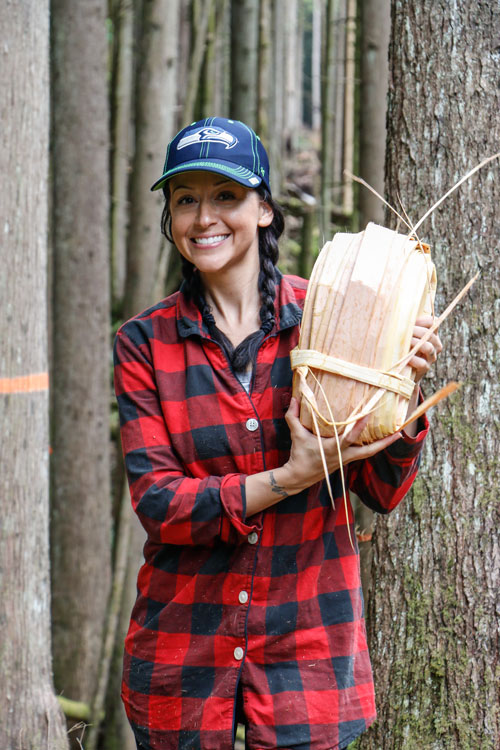
Department on June 27-28. The event, and others like it, is made possible by a growing partnership between the Tulalip Tribes and the Washington State Department of Natural Resources. The land is owned by DNR, with Sierra Pacific owning the timber. Department of Natural Resources notifies Tulalip Forestry when an area is scheduled to be cleared. This season, 83 acres were available for harvesting cedar.
“Tulalip Forestry worked in conjunction with both agencies’ representatives to coordinate the event and establish ground rules regarding allowable and non-allowable trees to be pulled,” explained Ross Fenton with the Tribe’s forestry department. “The relations Tulalip Forestry has established over the years for cultural cedar bark gathering has gone exceptionally well. Some tribal members base their sole incomes on products they make from cedar bark, so it’s very important we continue to maintain these positive relations.”
“Traditionally we would come out to harvest when the sap would run. That makes it easy to pull it off the tree. This stuff peels so nicely, I am loving it,” said Craig, pausing for a moment to survey the large expanse of trees swaying in the afternoon wind. “It is amazing to sit here and think about how our people used to do this. How they would all come together with their families and gather cedar. Of course they didn’t use the same tools we are using today, but they came out and gathered and made things, some of which we still have today.”
Many Tulalip youth participated in the two-day cedar-harvesting event, gathering strips for elders and learning techniques of separating the smooth inner bark from the rough outer bark. For many, this was their first trip gathering cedar.
“Do you know how the cedar is related to us?” asked Craig to her nephew and nieces, who were struggling to bring the long cedar strips up the steep incline. “She is our grandmother and she is giving us this gift of cedar and we need to thank her.”
“I love being out here,” said Gobin, as she tightly wound her cedar into a bundle tying it off with a scrap of thin cedar. “It is really addicting to be out here stripping the cedar, it is one of my favorite things to do.”
“Yes, grandpa would be proud of us,” remarked Craig.
For more information regarding future cedar harvesting events, please contact Tulalip Forestry at 360-716-4000.
Brandi N. Montreuil: 360-913-5402; bmontreuil@tulalipnews.com
Unintentional state waiver lets FERC pre-empt state Coastal Zone rules
WASHINGTON, D.C.
The Federal Energy Regulatory Commission has issued a declaratory order that FERC hydropower licensing under the Federal Power Act pre-empts state regulation under the Coastal Zone Management Act in an instance in which the state of Washington unintentionally waived its CZMA permit authority.
The June 19 ruling blocks a state-imposed stay of construction and allows work to begin on the 600-kW Admiralty Inlet Pilot tidal project (No. 12690) to be installed in Washington’s Puget Sound. FERC issued a hydrokinetic pilot project license to Admiralty Inlet on March 20. FERC and the state of Washington agreed in 2009 to coordinate procedures and schedules for reviewing hydrokinetic energy projects in state waters of Washington.
As a pre-requisite for FERC licensing, a state agency has six months from application in which to issue a shoreline management permit under the Coastal Zone Management Act.
While license applicant Snohomish County Public Utility District No. 1 filed a CZMA application with the Washington Department of Ecology in March 2012, Snohomish and Ecology advised FERC by joint letter in September 2012 that they had agreed to extend the state’s review period. However, the National Oceanic and Atmospheric Administration, which administers the CZMA, found extension of the review period did not comply with federal regulations and, as a result, Ecology waived its CZMA authority.
In May 2014, Ecology issued a shoreline permit for Admiralty Inlet incorporating conditions set by Island County, Wash., under state CZMA regulations including a requirement that project construction be delayed until appeals of the permit are concluded.
“The district argues that this stay would prevent it from implementing the terms of its license, which authorizes immediate construction of the project after the commission grants the necessary pre-construction approvals,” FERC said. “Because Article 410 of the license and biological opinion require that construction can only occur during a work window of July 16 to October 14, the district argues that it could miss this work window and construction could be delayed by one to two years.”
FERC agreed to Snohomish PUD’s request for a declaratory order upholding Federal Power Act pre-emption of state regulation.
“Because Ecology waived its consistency certification under the CZMA, a Shoreline Permit under Washington’s Shoreline Act is no longer required as a matter of federal law,” the commission said. “Therefore, we grant the district’s petition and declare that the FPA pre-empts any supplementary or inconsistent state or local requirements under Washington’s Shoreline Act. The district need not comply with the state-imposed stay provision of condition 23 of its Shoreline Permit. To hold otherwise would be inconsistent with the FPA, because it would allow the state permit to stay a commission hydroelectric license.”
FERC noted that Snohomish has informed Ecology and Island County that it intends to comply voluntarily with all provisions of the shoreline permit except the stay of construction.
“As a general matter, the commission encourages licensees to comply with state and local requirements to the extent that they do not conflict with the commission’s requirements or frustrate the purposes of the FPA,” FERC said. “We recognize, however, that under the Supremacy Clause of the Constitution, federal law pre-empts state and local laws when Congress occupies the field by enacting comprehensive legislation that leaves no room for supplemental state or local regulation.”
“This is significant for licensees who attempt to implement license obligations but are barred or delayed by state and local regulatory authorities with standards that conflict with the license,” said Mike Swiger of law firm Van Ness Feldman, which represented Snohomish.
Subsea cable operator challenge pending
FERC said it would address in a subsequent order a challenge by Pacific Crossing, owner of PC-1, a subsea telecommunications cable linking the United States and Japan, to the licensing of Admiralty Inlet.
Pacific Crossing unit PC Landing Corp. previously requested rehearing of the licensing order, saying the project would pose a risk to its nearby fiber-optic cable in Washington’s Puget Sound.
FERC also denied a requested stay but said it would address a rehearing request by the Tulalip Tribes of Washington who contend the project would affect access to its fishing grounds.

